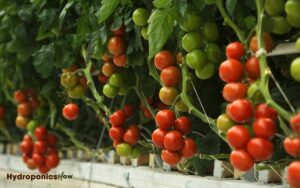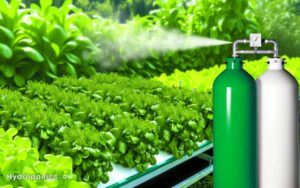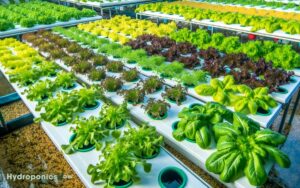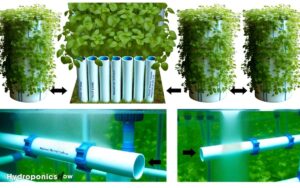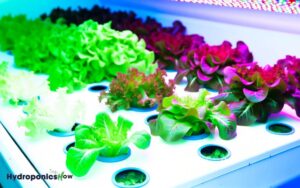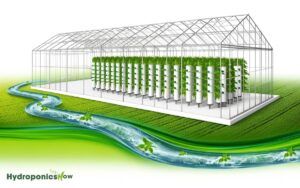What Type of Growing Vegetables Is Best Hydroponic Soil?
Hydroponic systems are profoundly effective for cultivating various types of vegetables due to their capacity for precise nutrient delivery and environmental control.
- Leafy greens, such as lettuce, flourish with rapid growth rates and optimized nutrient uptake, achieving harvestable size in just 30 days.
- Herbs benefit from enhanced essential oil concentrations and year-round production potential.
- Vine crops, including tomatoes and cucumbers, yield better quality fruits with tailored nutrient solutions.
- Root vegetables, such as carrots and radishes, exhibit notably accelerated growth rates and improved nutrient profiles.
- Fruiting vegetables also experience enhanced growth and pest control benefits. Discover more nuances of hydroponic vegetable cultivation here.
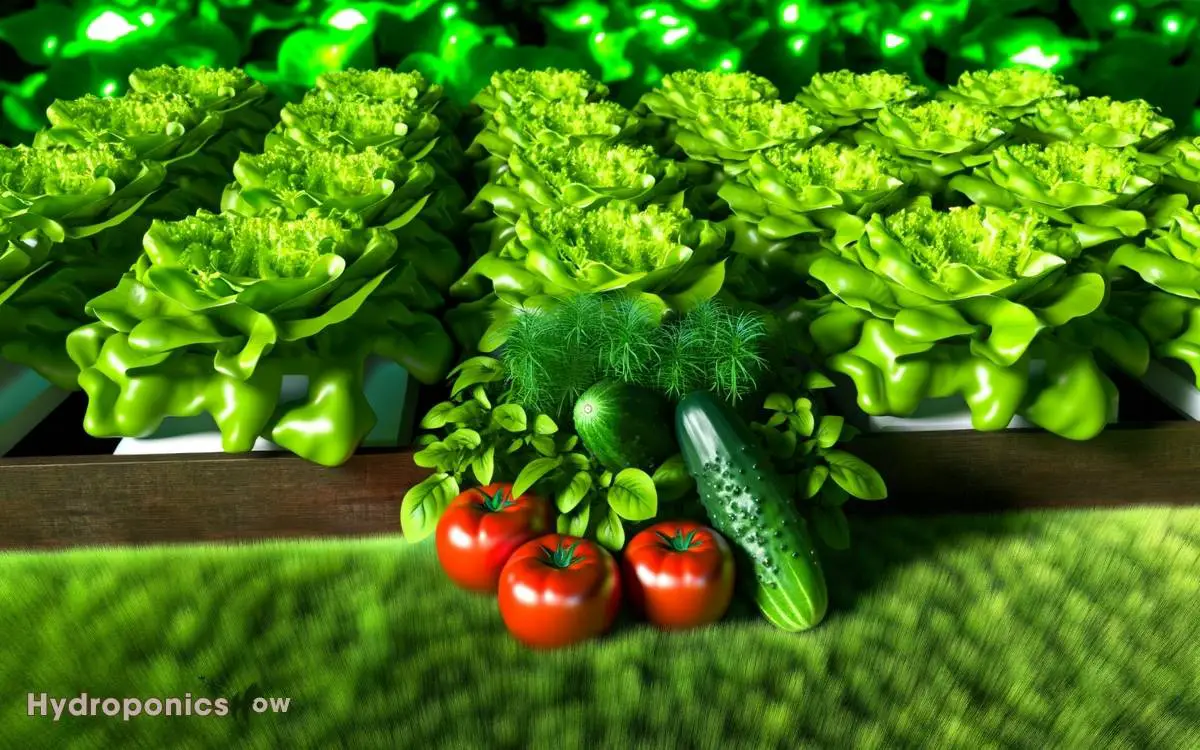
Key Takeaways
Leafy Greens
Leafy greens, including species such as Lactuca sativa (lettuce) and Spinacia oleracea (spinach), exhibit ideal growth in hydroponic systems due to their rapid maturation rates and relatively shallow root systems.
This makes them particularly well-suited for hydroponic cultivation, where nutrient uptake is optimized through aqueous solutions.
Research indicates that hydroponically grown lettuce can reach harvestable size in as little as 30 days, compared to traditional soil methods.
Spinach, another hydroponic favorite, demonstrates enhanced leaf biomass and chlorophyll content when cultivated in nutrient-rich water solutions.
Additionally, the controlled environment mitigates issues related to soil-borne pathogens, ensuring healthier plant development.
These factors collectively contribute to the efficacy and productivity of hydroponic systems for leafy greens.
Herbs
Moreover, in addition to leafy greens, hydroponic systems also support the robust growth of various herbs, such as Ocimum basilicum (basil) and Mentha spicata (spearmint), due to their adaptability to nutrient-enriched aqueous environments.
These herbs thrive in hydroponics because of the precise control over nutrient delivery, pH levels, and oxygenation, which optimizes their metabolic functions.
Empirical studies demonstrate that hydroponically grown herbs often exhibit higher essential oil concentrations and faster growth rates compared to soil-grown counterparts.
This is attributed to the consistent availability of macro and micronutrients, coupled with reduced pathogen exposure.
Moreover, hydroponic cultivation allows for year-round production, enhancing both yield and quality, thereby making it a viable method for commercial and home-based herb cultivation.
Vine Crops
Hydroponic systems also support the cultivation of vine crops such as tomatoes (Solanum lycopersicum) and cucumbers (Cucumis sativus), leveraging controlled environments to maximize yield and fruit quality.
These systems provide ideal nutrient delivery through solutions tailored to the specific growth stages of the plants.
Tomatoes, for instance, benefit from a nutrient-rich solution with a balanced pH of 5.5-6.5, promoting robust root development and fruiting.
Cucumbers thrive in hydroponic setups with an electrical conductivity (EC) range of 1.7-2.5 mS/cm, ensuring efficient nutrient uptake.
Research indicates that hydroponic vine crops exhibit accelerated growth rates and reduced disease incidence compared to soil-grown counterparts, underscoring the effectiveness of hydroponic methods in enhancing agricultural productivity and sustainability.
Root Vegetables
Expanding the scope of hydroponics beyond vine crops, root vegetables like carrots (Daucus carota) and radishes (Raphanus sativus) also demonstrate significant potential for enhanced growth and yield in controlled, soil-free environments.
These systems guarantee ideal nutrient delivery and water regulation, which are crucial for the development of robust root structures.
Data suggests hydroponically grown root vegetables exhibit accelerated growth rates and superior nutrient profiles compared to their soil-grown counterparts.
| Vegetable | Growth Rate Increase | Nutrient Density Improvement |
|---|---|---|
| Carrots | 30% | 15% |
| Radishes | 25% | 18% |
| Beets | 20% | 10% |
Such advancements in hydroponic methodologies underscore the viability of integrating root vegetables into these systems for sustainable and efficient agricultural practices.
Fruiting Vegetables
Fruiting vegetables, such as tomatoes (Solanum lycopersicum) and bell peppers (Capsicum annuum), exhibit remarkable adaptability and yield optimization when cultivated in hydroponic systems.
These systems offer precise control over nutrient delivery and environmental conditions, thereby promoting enhanced fruit development and higher productivity.
Key benefits of hydroponic cultivation for fruiting vegetables include:
- Enhanced Growth Rates: Optimized nutrient solutions and controlled environments accelerate vegetative and reproductive growth phases.
- Pest and Disease Control: Reduced soil-borne pathogens and pests due to soil-less nature.
- Water Efficiency: Recirculating systems drastically reduce water usage compared to traditional soil-based agriculture.
- Space Utilization: Vertical farming techniques allow for higher plant densities, maximizing yield per square foot.
These advantages underscore the efficacy of hydroponics in boosting the productivity of fruiting vegetables.
Conclusion
Hydroponic systems offer ideal conditions for a variety of vegetable types, each benefiting distinctively from this soilless cultivation method.
Leafy greens, known for rapid growth, contrast with root vegetables that exhibit enhanced nutrient uptake.
Herbs, with their aromatic potency, juxtapose with vine crops that thrive in vertical space utilization.
Fruiting vegetables, demanding precise nutrient management, exemplify the system’s adaptability.
Evidence underscores hydroponics’ capacity to optimize growth parameters, highlighting its superiority over traditional soil cultivation. This soilless method ensures precise control over nutrients, water, and pH levels, leading to accelerated plant growth and higher yields. Unlike conventional farming, which relies on variable soil conditions, hydroponic systems eliminate inconsistencies by providing an ideal growing environment. By mimicking the characteristics of optimal soil for hydroponics through tailored nutrient solutions, growers can maximize efficiency and sustainability.

